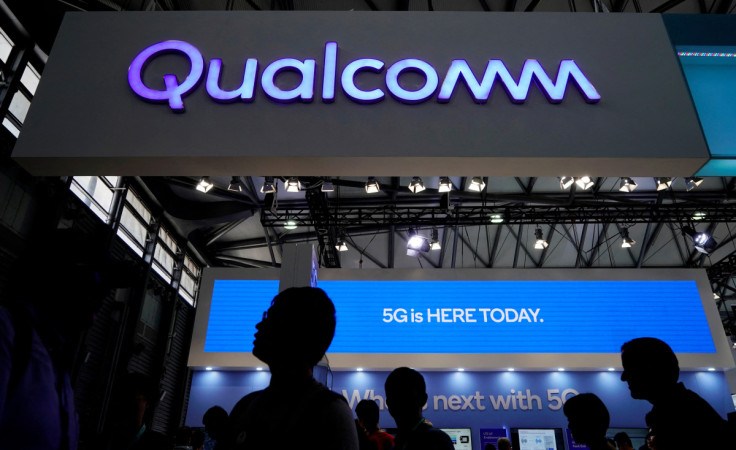Qualcomm Announces Snapdragon Seamless To Enable Cross-Platform Communications
Snapdragon Seamless will enable Android, Windows and Snapdragon devices to discover each other and share information.

Qualcomm is teaming up with a slew of big tech giants to enable cross-platform communications. It is no secret that smart devices have become an inseparable part of our lives in the last few years.
While people have multiple smart devices in their homes, they usually only work seamlessly with each other if they are made by the same brand like Apple, Samsung and Xiaomi.
Snapdragon Seamless is fantastic.. can't wait to try it! #SnapdragonSummit pic.twitter.com/QgX6AiuKgc
— Ian’s Spooky Tech 🎃📱💻💾👻 (@IansTechYT) October 25, 2023
In a bid to change that, Qualcomm has announced Snapdragon Seamless technology. The American tech giant wants to revolutionise the way people interact with their devices by ensuring they do not lock themselves in with one particular brand.
Qualcomm Snapdragon Seamless: Top features
Snapdragon Seamless is a cross-platform technology which is currently under development. Qualcomm has collaborated with OPPO, Lenovo, Honor, ASUS, Xiaomi, Android and Microsoft to develop this technology.
So, it is safe to say that devices from the abovementioned brands will be among the first ones to adopt this newfangled technology. Android, Windows, and Snapdragon devices will be able to use Snapdragon Seamless to find and share information with each other.
Apparently, all devices will work like one integrated system just like when you use multiple devices from the same brand. However, the most notable difference here is that there will be no restrictions in terms of brand, OS or platform.
There are no prizes for guessing that making everything work seamlessly is an arduous task. Qualcomm shared some examples that highlight the key advantages of Snapdragon Seamless.
There you go, #SnapdragonSeamless, aiming to make multi-device experience seamless. Nice demo from @Honorglobal showcasing how one can transfer photos, and other content across platforms and products— tablet, phone and PC. pic.twitter.com/CI4tus002D
— Ritesh Bendre (@GadgetFreak4U) October 24, 2023
According to the company, keyboards and mice will work seamlessly across PCs, tablets and mobile phones. Moreover, users will be able to drag and drop files and windows across different types of devices.
Also, earbuds will be able to switch across devices depending on the audio source priority. You will not have to check multiple places to manage all connected devices as they will be accessible in a single place.
Aside from being able to see the battery percentage, you will be able to lock/unlock each paired device. Notably, the team is also ensuring that intercommunication consumes low power and has low latency.
How will Snapdragon Seamless improve user experience
Here are a few examples of how Snapdragon Seamless can improve the user experience.
- You can start working on a document on your phone and then transfer it to your laptop and continue working on it.
- Moreover, you can use your phone either as a second screen for your laptop or as a touchscreen input device.
- You can copy and paste text between your phone and laptop without even switching windows or applications.
- You can start a video call on your mobile phone and then transfer it to a laptop if you need a larger screen.
- You can use your phone to control smart home devices.
- You will be able to use your VR headset to play a game on your laptop. Snapdragon Seamless will synchronise the audio and video perfectly.
In the beginning, the platform will be compatible with a wide range of devices, including smartwatches, tablets, earbuds, laptops and smartphones. Eventually, it will work with IoT platforms, Auto and XR.
VP and GM of Wearables and Mixed Signal Solutions at Qualcomm Dino Bekis said: "Snapdragon Seamless fundamentally breaks down the barriers between OEMs, devices and operating systems. It's the only cross-device solution to truly put the user first."
The newly announced Qualcomm Snapdragon S7 and S7 Pro Gen 1, Snapdragon X Elite and Snapdragon 8 Gen 3 processors will work with Snapdragon Seamless.
So, there is a possibility that devices powered by these processors could support this new cross-platform technology. Earlier this year, a report indicated that Qualcomm is teaming up with Meta to bring on-device AI apps to Samsung's upcoming Galaxy S24 series.
Qualcomm has previously confirmed that it is working with some Android smartphone companies to develop a satellite messaging feature.
© Copyright IBTimes 2025. All rights reserved.






















